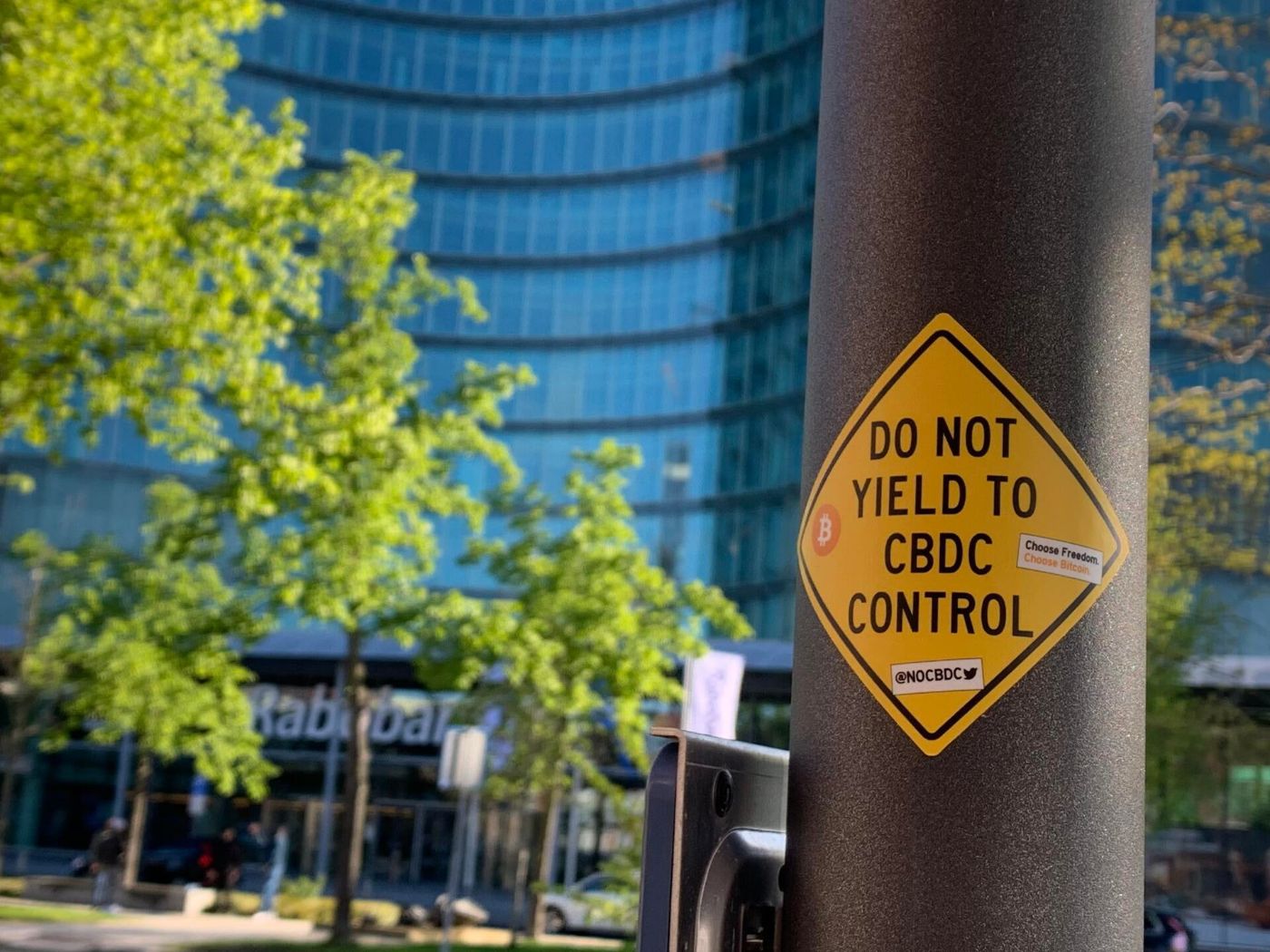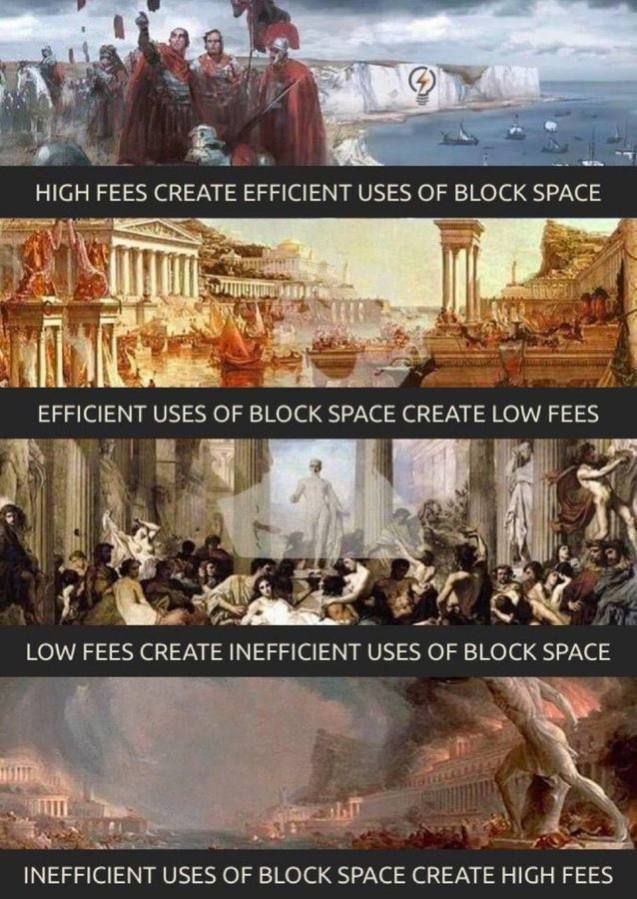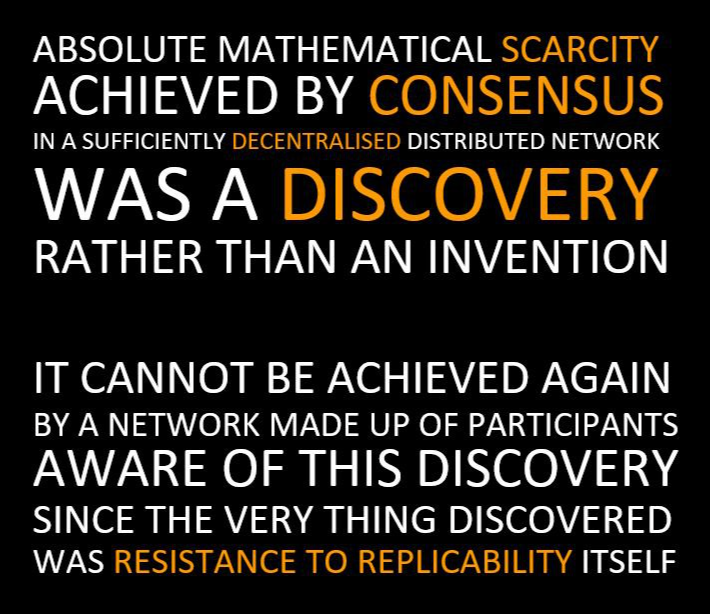and the distribution of digital products.
Daniel Jeffries Tried To Predict Bitcoin’s Future in 2017: How We Can Learn From It
A fiction author and a futurist, Daniel Jeffries is one of the most popular writers in HackerNoon’s history. At the time of publishing, his article “What Will Bitcoin Look Like in Twenty Years?” has accumulated over 170K reads and keeps going strong. However, trying his hand at prediction and divination could have been an admitted fool’s errand, “This is the type of article that will look unbelievably foolish or incredibly brilliant when I’m old and gray.”
\ How did Daniel Jeffries do at predicting Bitcoin’s future? Barely six years later, that’s what we’re here to find out.
\

\ Since my analysis of the time-traveler letter was one of my most popular articles, currently at a humble 1.9K reads, I decided to write a sequel. On the surface, it seems like we’re here to celebrate the predictions Daniel Jeffries was spot on about, or to make fun of the misguided ones. What we’ll do, however, is to use his article as a tool for teaching valuable Bitcoin concepts and ideas. The most important subject of them all.
\ Let’s start by making fun of Mr. Jeffries’ misguided predictions, though.
The Main Problem With Daniel Jeffries’ ArticleIn what now seems like an unforgivable rookie mistake, Mr. Jeffries confuses Bitcoin with the rest of the crypto industry throughout the whole article. This mixup alone invalidates his thesis and leaves him looking “unbelievably foolish” just a few years after publication.
\ The world, in its infinite wisdom, divided Bitcoin and so-called Altcoins from the very beginning. The two names, the two categories, are not there by happenstance. The divide describes two radically different worldviews. Bitcoin wants to fix the money, and thus fix the world. The other cryptocurrencies are basically businesses; their objective is to make money.
\ The name “Altcoins” is also ridiculous, because there’s no alternative to Bitcoin, but that’s a discussion for another time.
\ This leaves us with little material to work with because Daniel Jeffries’s article mostly deals with “blockchain,” “decentralized consensus,” and general “cryptocurrencies.” The futurist’s first and most terrible mistake is not recognizing that Bitcoin is the main innovation in space. Many cryptocurrency experts fail to see this truth, but the market doesn’t and it's speaking loud and clear.
\ That being said, Jeffries did predict several developments in the cryptocurrency space. None of them is in Bitcoin’s realm of importance, but he was right nonetheless.

To keep the balance, let’s go through Mr. Jeffries’ most impressive predictions.
\ In the name of clarity: his quotes are in italics, and my comments are in bold.
“In ten or twenty years expect very strong government cryptocurrencies to come to power and dominate the flow of money for many, if not most, people around the world.”
\n That’s coming, but they’re not playing the same game as Bitcoin. By definition, CBDCs will be completely centralized.
\ “Instead of distributing power, they’ll look to concentrate even more power, by giving themselves the ability to track every single citizen’s spending with impunity and automatically collect taxes from wages and sales of goods and services.”
\n Yeah, Daniel Jeffries is right on this one.
\
“Many governments will not sit by and lose control of the money supply without a vicious fight. Anyone working on a project right now should be anticipating protocol level assaults on decentralized cryptos and designing defenses against them.”
\n This is one of the biggest threats to Bitcoin, who knows what governments have up their sleeves? However, Satoshi Nakamoto designed a network that thrives in adversarial environments.
\ All the other cryptocurrencies can relax, since they’re not really decentralized they pose no threat to any government.**
\
“We need stable, spendable coins. Imagine this as the classic “store of value” Paul Krugman is always bitching about and know that we actually do need this to buy and sell every day goods.”
\n That’s right. Good, old, Daniel Jeffries predicted stablecoins and dunked on Paul Krugman at the same time. Impressive.
\
“On the evil side of the house we have the Chinese Social Credit system that is about as Black Mirror as it gets today. It will get infinitely worse as nation-states use Reputation Banks to cram ideology down people’s throats.”
\ This is happening, we can feel it all around us. Another successful prediction by Mr. Jeffries.
Look, I respect Daniel Jeffries and like his style of writing. On Bitcoin, he was completely out of bounds, though. I hope that, as a freethinker, the author can respect the criticism of his ideas and not take it personally.
Daniel Jeffries Can’t Grasp Bitcoin’s Block Size Limit’s Reason To BeBy the looks of it, it’s safe to say Daniel Jeffries sided with the big-blockers in the mythical blocksize war. In the section titled “The protocols of Coins will Get Abstracted from the Coins Themselves,” a bad premise from the get-go, the futurist makes this faulty analysis:
\
“Let’s face it, the 1 MB limit is nothing but a hack. Originally Bitcoin had no limit. Then Satoshi snuck it in overnight with no mention of it and no explanation in the source code. It was most likely nothing but a ham-fisted way to prevent DDoS attacks.”
\ The block size limit guarantees that Bitcoin will tend towards decentralization. The blockchain contains every transaction ever made, and bigger blocks would inevitably lead to a much heavier blockchain. Why does this matter? Because node runners first have to download and then handle all that data. The heavier the blockchain, the fewer the nodes. It’s as simple as that. \n \n Also, ideally, the nodes should be distributed all over the world. Memory and computing power might be cheap and easy to get in your neck of the woods, but it’s very different in other parts of the planet. Faster and more powerful computers are not evenly distributed. And we want nodes here, there, and everywhere.

\ The Bitcoin blockchain keeps growing every day, of course. However, by deciding to keep the base layer as light as possible, the Bitcoin network tends towards decentralization. That’s the priority. We have to fight to preserve that.
\ Nowadays, after Segwit, the block size is 4 MB. That’s more than enough. The network has to scale, sure, and it’s doing so in other layers like the Lightning Network.
Five Other Things Daniel Jeffries Got RightTo restore the balance, let’s return to Mr. Jeffries’ successful predictions. \n In the name of clarity: his quotes are initalics, my comments in bold.
\
“The bubble will pop. Vitalik is right. 90% of tokens will fail.”
\n Make it 99% and include Ethereum in the package and we’re cooking.
\
“I see the Latin American countries, freewheeling no-holds-barred globalists like Singapore, historical bankers-to-the-world Switzerland and many of the Asian and African countries welcoming decentralized crypto with open arms.”
\n So far, Africa and Latin America are leading the way and choosing Bitcoin-only, but yeah.
\
“If you aren’t imagining all the ways a hostile group will use the power of blockchain, one that doesn’t share your views on openness and freedom and collaboration, then you’re just naive.”
\n Yeah, Bitcoin is money for enemies. Like cash, all of your enemies will be able to use it, and that guarantees that all your friends will also have access. That’s the price the world has to pay to obtain neutral, uncensorable, permissionless money.
\
“Over the next twenty years, I predict dozens, if not hundreds of experimental distributed consensus protocols, capable of transaction levels that blow away Visa level processing.”
\n That sounds about right. All of the successful ones will be built on Bitcoin, though. The Lightning Network alone already blows Visa level processing away.
\
“One or two of these systems will come to dominate all coins and become the meta-system to rule them all, uniting many different kinds of coins…”
\n Ehh, no wait, we don’t need scam coins. Sats are the standard. The dominant system is Bitcoin.
\
“I foresee many algorithmic methods to freeze, roll back and protect transactions, as well as ways to self-escrow money and recover stolen money.”
\ Innovate away, technical people. We need your products to make Bitcoin easier to use.
\
“I also see many of the kinds of systems we really need arising from the desire to pass digital money down to your children.”
\ This is already happening in Bitcoin, and inheritance services are likely to get better with time.
In the writer’s only other point that deals with Bitcoin exclusively, Daniel Jeffries digs an even deeper grave. The section’s title is “Bitcoin Has a 50/50 Shot At Surviving” and his reasoning is out of bounds by a mile:
\
“To start with, Bitcoin has no built-in governance. This is a crucial flaw. Only a few ways to change it exist. The first is to submit a proposal where almost everyone agrees and as we have seen with SegWit, that’s incredibly hard. It took four years for the change to get adopted.”
\ Bitcoin moves slowly by design. Money is not a toy. Money is not software. The “move fast and break things” approach is not suitable for the next global reserve currency. In Bitcoin, changes are incredibly hard to go through, and that’s the ideal state for a project this important. And this chaotic.

Make no mistake, Bitcoin does have a simple “built-in governance.” Every node can run the software its owner desires, and that counts as a vote. That’s it. Each node is independent and its software reflects what the owner wants to see in Bitcoin. Anything more than that might act as a centralizing force and become a single point of failure. A huge target that would make Bitcoin easy to kill.
\
“A coin with well designed, widespread, build-in governance will have a massive advantage over Bitcoin and could easily replace it, as it makes upgrades seamless and smooth.”
\ False. There are thousands of cryptocurrencies pretending to be decentralized while having a “built-in governance” deciding everything. All of them tend to zero opposed to Bitcoin. The market understands that Bitcoin is in a league of its own. Subconsciously, people do too. And they understand that their currency of choice needs stable rules and not seamless upgrades.
\
“Bitcoin is a beautiful, brilliant idea and it’s already changed the world. It won’t fail because it’s a fraud or a scam, but because of its own hard coded rules, in-fighting and lack of governance.”
\ Bitcoin’s success is not guaranteed, but it won’t fail because of the reasons Daniel Jeffries wields. The in-fighting is expected and even desired in a decentralized system. It makes Bitcoin unpredictable. The lack of governance is by design. Where is the enemy going to strike? Who are they going to send to jail? How can they control it?
\ As for the hard-coded rules, those are arguably the main reason for Bitcoin’s success. Rules without rulers. The world’s next reserve currency needs a predictable system that won’t change the regulations mid-game.
One Last Thing Before the ConclusionBefore closing, our friend Daniel Jeffries warns us:
\
If the Internet has taught us anything it’s that open systems tend towards centralization and given enough time central powers can and will subvert and corrupt any system to their own ends.”
\ Satoshi built Bitcoin to resist just that. Its success against centralizing forces is one of the reasons this project is special, an anomaly, something the world had never seen. Does that guarantee that Bitcoin will resist the constant centralizing attacks that it constantly receives? No, it doesn't.
\ The Bitcoin project can still fail. That’s why it needs a social layer to protect it; and I’m talking about you and me, dear reader. Bitcoin is the most important discovery of our lifetime and we’re the first and the last line of defense. The weight of the world rests on our shoulders.
\ No pressure, though.
\ This was a dispatch by Eduardo Prospero, Bitcoin’s ambassador to HackerNoon.
\ Subscribe to Daniel Jeffries's newsletter. He’s a phenomenal writer.
\ In case you missed them, these are the previous dispatches →
\ 1 - “Why BITCOIN ONLY? - Bitcoin is NOT “Crypto”
2 - “Bitcoin Is The ONLY Digital Scarcity That Matters — Here's Why”
3.- “Bitcoin’s Weak Spot: Mining Centralization and How We're Working on It”
4.- “Bringing Energy To Those Who Need It: Five Mind-Blowing Bitcoin Mining Stories”
5.- “In 2013, A Time Traveler Warned Us About Our Bitcoin Future. How Right Was He?”
6.- “The Hidden Hand: Is Paper Bitcoin Suppressing BTC Prices?”
\ Open-source main image by Yegorpetrov.
- Home
- About Us
- Write For Us / Submit Content
- Advertising And Affiliates
- Feeds And Syndication
- Contact Us
- Login
- Privacy
All Rights Reserved. Copyright , Central Coast Communications, Inc.